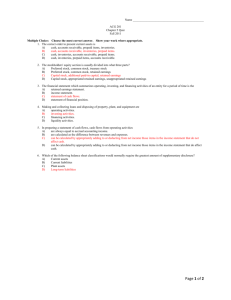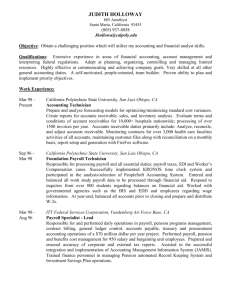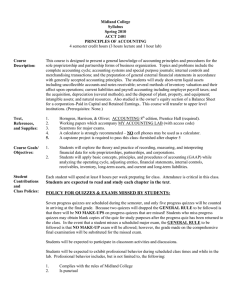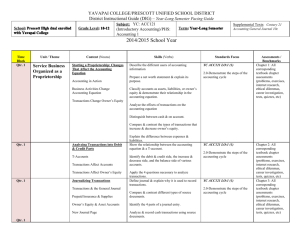AC 220 - Accounting II
advertisement
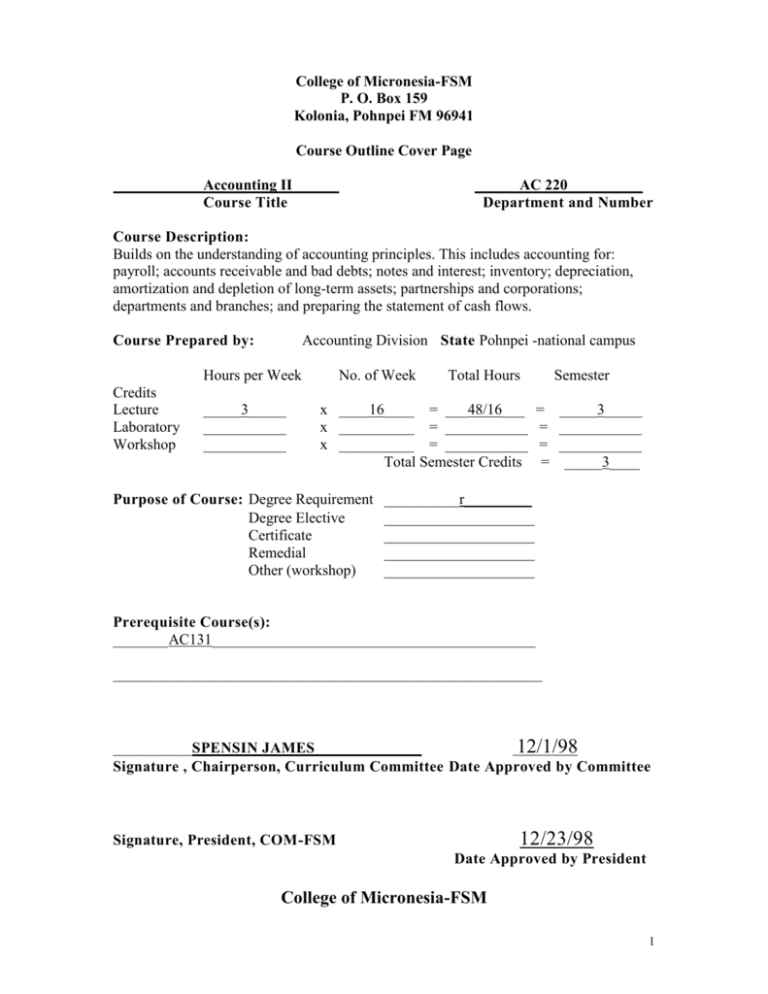
College of Micronesia-FSM P. O. Box 159 Kolonia, Pohnpei FM 96941 Course Outline Cover Page Accounting II Course Title AC 220__________ Department and Number Course Description: Builds on the understanding of accounting principles. This includes accounting for: payroll; accounts receivable and bad debts; notes and interest; inventory; depreciation, amortization and depletion of long-term assets; partnerships and corporations; departments and branches; and preparing the statement of cash flows. Course Prepared by: Accounting Division State Pohnpei -national campus Hours per Week Credits Lecture Laboratory Workshop _____3_____ ___________ ___________ No. of Week Total Hours x ____16____ = ___48/16___ x __________ = ___________ x __________ = ___________ Total Semester Credits Purpose of Course: Degree Requirement Degree Elective Certificate Remedial Other (workshop) Semester = = = = _____3_____ ___________ ___________ _____3____ __________r_________ ____________________ ____________________ ____________________ ____________________ Prerequisite Course(s): _______AC131___________________________________________ _________________________________________________________ __________SPENSIN JAMES 12/1/98 Signature , Chairperson, Curriculum Committee Date Approved by Committee 12/23/98 Signature, President, COM-FSM Date Approved by President College of Micronesia-FSM 1 Course Outline AC 220 - Accounting II A. General Objectives To build on the understanding of accounting principles. This includes accounting for: payroll; accounts receivable and bad debts; notes and interest; inventory; depreciation, amortization, depletion and disposal of long-term assets; and partnerships and corporations. B. Specific Objectives: The student will be able to: 1. Describe in detail employee payroll accounting; account for employee taxes and deductions in both the FSM and the United States systems; and properly complete and inteprete the employee earnings record and payroll register. 2. Account for employer payroll taxes and use both U.S. and FSM payroll forms, journalize and post the liability and payment of payroll liabilities. 3. Calculate the net realizable value of Accounts Receivable and Allowance for Doubtful Accounts using Income Statement and Balance Sheet approaches. 4. Describe in detail the promissory note and make calculations for promissory notes including simple interest and determining the time of the note. Account for Notes Receivable and Notes payable. Prepare necessary adjusting entries. 5. Calculate and/or estimate the value of ending merchandise inventory and cost of goods sold using various valuation/estimation methods. 6. Identify long-term assets and their “depreciable” cost, calculate depreciation using various depreciation methods, record disposal of plant assets, and calculate amortization and depletion expenses. 7. Describe the partnership form of business – its organization, formation, distribution of net income or net loss, dissolution, and liquidation. Prepare journal entries for the aforementioned transactions. 8. Describe the corporate form of business, define its characteristics, explain stock terminology and journalize stock transactions, including stock sales and repurchases (treasury stock). 9. Define retained earnings and calculate and journalize stock and cash dividend transactions and stock splits. Prepare a statement of retained earnings and journal entries for retained earnings appropriations. 2 10. Record and print journal/ledger entries, trial balance and financial statements using general ledger computer software. C. Text: Dansby, Kaliski & Lawrence: Paradigm College Accounting 4th Edition, (Chapters 11 – 20) EMC Paradigm, St. Paul, MN; 2000. D. Methods of Instruction: Lectures, guest speakers, projects, practice sets, and various individual and group computer and manual assignments. E. Course Content: I. II. III. IV. V. VI. VII. VIII. IX. X. XI. Payroll: Employee Earnings and Deductions. Payroll: Employer Taxes and other Obligations. Accounts Receivable and Bad Debts. Notes Receivable and Notes Payable. Inventory Valuation. Acquisition, and Disposal of Plant Assets. Depreciation, Amortization, and Depletion. Deferrals, Accruals and Reversing Entries Partnership Accounting. Corporations: Organization and Capital Stock Corporations: Retained Earnings and Dividends. F. Evaluation: Grades will be assigned based on the following percentage of total points received from exams, projects, quizzes, practice sets, class participation, and the mid-term and final exams: A………………………………………..90% and above B………………………………………..80% to 89% C………………………………………..70% to 79% D………………………………………..60% to 69% F………………………………………...59% and below G. Attendance Policy The COM-FSM attendance policy will be observed. 3
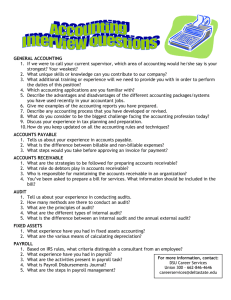

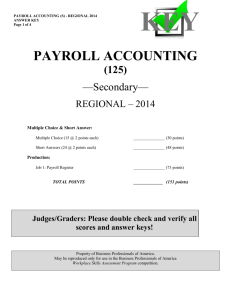

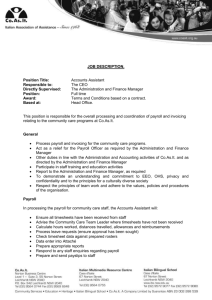


![[Product Name]](http://s2.studylib.net/store/data/005238235_1-ad193c18a3c3c1520cb3a408c054adb7-300x300.png)
